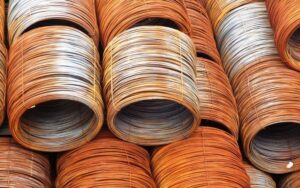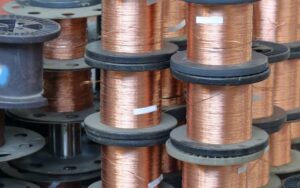Table of Contents
The foundation for preparing the micro-coils is the coil winding process. This process involves the winding of an electrical conductor around a core in the shape of a helix, spiral, or coil. Manufacturers can also design the micro-coils into different shapes and dimensions based on the purpose of use. How the clients require the inductance, magnetic field strength, and resistance of the micro-coils, that also plays a crucial role to determine the coil’s shape and size.
In the applications where electric current and magnetic field interact with each other, electromagnetic coils are necessary, for instance, to prepare the devices, such as inductors, electromagnets, transformers, and sensors. The interaction between the magnetic field and electric current occurs in two ways, such as-a) An electric current helps to produce a magnetic field while passing through a wire, or b) An external magnetic field helps to produce an electric current n the wire while passing through the interior of the micro-coil.
Challenges to Prepare the Micro-Coils:
The limited physical size of the invasive medical devices is the main challenge for micro-coil manufacturers. This is because the micro-coils have to be very small so that the manufacturers can place the coils into the medical devices. For this reason, the need for very tiny micro-coils is rising day by day. To prepare these tine coils, manufacturers require to have a built-in house and specialized equipment and machinery. The crucial challenges for the preparation of micro-coils are-
- Tight spaces for the coil winding process,
- Requirements to fulfill high-speed orders,
- Handling of the twisting wires,
- Insulation of the electrical conductor to eliminate reaching the breaking point.
Coil Winding Methods and Machinery:
It is difficult for someone to wind the coils by hand due to the tiny diameter of the wires. On the other hand, to prepare an enormous number of micro-coils at a time, manufacturers require automated machinery that is useful for mass production. When it comes to winding coils, manufacturers can not rely on the traditional methods because these methods are neither suitable nor efficient to satisfy industrial purposes. Depending on the winding type and geometry of the coils, the major classifications of the micro-coils are orthocyclic, wild or jumble, and helical.
For a helix coil, the winding process involves shifting directions (moves forward and backward) to create the layers of the wire around a core. However, manufacturers need to use ultra-fine wires for this process, otherwise, after some layers, the structure will become very tight. The finest method to wind the micro-coils is the orthocyclic winding method. In this method, manufacturers place the wires of the upper layer in the channel of the wires of the lower layer. Manufacturers can also make the micro-coils more efficient by minimizing the materials and shape of the coil through the winding process. You can expect an efficient coil to offer a good distribution of the strength of the electromagnetic field across the windings and effective heat conduction capacity.
For the preparation of consecutively wound micro-coils, we can not use the similar equipment that we can use for the winding of regular coils. Manufacturers should apply advanced methods and specialized and in-house equipment for the preparation of the micro-coils.
Micro-Coil Winding Process:
Manufacturers require to provide almost 2000 tuns of wires for the winding f the micro-coils and then again, the coils have to be very tiny. For this reason, the thickness of the wires requires to be very small. The ultra-fine wire that has a diameter of about 9 microns is the most effective for the preparation of micro-coils. When you use this ultra-fine for providing more than 100 windings, the final structure becomes smaller than the head of a pin. However, custom micro-machining technologies are essential for the manufacturing process that involves ultra-fine wires. Traditional welding and soldering methods are not suitable to work with the miniature diameter of the ultra-fine wire. In this case, thermal compression bonding technology is efficient to join the wires by following tight tolerances at very high temperatures.
Applications:
Micro-coils have numerous applications in the medical field and electronics. The most crucial applications are monitoring of the miniaturized implants, operating of the invasive medical devices, RF or radiofrequency treatments, electromagnetic radiation-based treatments, energy transfer, navigation and orientation, and in many other therapeutical applications. Above all micro-coils are the crucial components of medical sensors.




